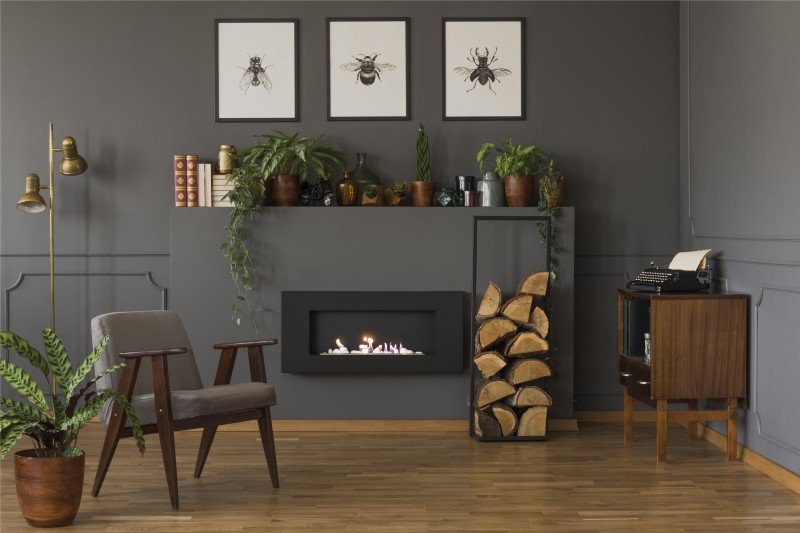The Fireplace: A Warm Embrace of Tradition and Comfort
Fireplaces have actually been an essential part of human habitation for centuries, serving as a source of warmth, a gathering location, and a sign of convenience. While the modern variations may vary incredibly from their ancient forefathers, the attraction of a fireplace sustains. This post explores the different elements of fireplaces, including their history, function, types, and maintenance, while also dealing with regularly asked concerns.
The Evolution of Fireplaces
Fireplaces go back to prehistoric times when open flames were utilized for cooking, heating, and security from wildlife. Over the centuries, fireplaces evolved from easy fire pits to the advanced performances we see today. Here is a short timeline of their advancement:
- Prehistoric Era: Cavemen utilized open flames for warmth and cooking. Wind and smoke frequently blew into residences.
- Middle Ages: Stone and brick fireplaces ended up being typical in homes and castles, including chimneys to bring smoke outside.
- Renaissance: Elaborately created mantels emerged, and fireplaces became centers of social interaction.
- Industrial Revolution: Innovations in heating products caused a variety of designs and functionalities.
- Modern Era: The development of natural gas, electric, and bioethanol fireplaces provided cleaner options to traditional wood-burning units.
Table 1: The Evolution of Fireplaces
| Period | Characteristics |
|---|---|
| Prehistoric Era | Open flames for warmth and cooking |
| Middle Ages | Stone and brick structures with early chimneys |
| Renaissance | Elaborate mantels, social centers |
| Industrial Revolution | Varied designs, development of new materials |
| Modern Era | Gas, electric, and bioethanol choices |
The Purpose of a Fireplace
Fireplaces serve dual functions: they supply physical warmth and create a psychological environment. Homeowners frequently collect around the fireplace to bond, share stories, and delight in a cozy setting. The radiance of a fire can be relaxing, adding to a sense of relaxation and intimacy. Beyond individual pleasure, fireplaces likewise offer functional advantages, including:
- Home Heating: Effective heat source, especially in cooler environments.
- Increased Home Value: A well-designed fireplace can improve the visual worth of a home.
- Emergency situation Heating: In case of power blackouts, wood-burning fireplaces can function as an essential heat source.
- Aesthetic Appeal: A centerpiece that adds to interior decor.
Types of Fireplaces
Today, fireplaces can be found in numerous styles and fuel types, accommodating a varied series of preferences and settings. Here are some typical types:
Wood-Burning Fireplaces:
- Traditional fire pits
- Traditional masonry fireplaces
- Need substantial upkeep and chimney upkeep
Gas Fireplaces:
- Available in both direct vent and ventless varieties
- Simpler to utilize and keep than wood-burning fireplaces
- Provide immediate heat with a flick of a switch
Electric Fireplaces:
- Offer associated heat sources without genuine flames
- Often developed to mimic traditional fireplaces
- Ideal for smaller spaces and homes without a chimney
Bioethanol Fireplaces:
- Use bioethanol fuel, offering a sustainable option
- Need no ventilation and can be positioned anywhere
- Safe and easy to maintain
Table 2: Types of Fireplaces
| Type | Fuel Source | Features | Maintenance Requirements |
|---|---|---|---|
| Wood-Burning | Wood | High atmosphere, heat source | Routine chimney cleansing |
| Gas | Natural gas or gas | Instant heat | Minimal, occasional servicing |
| Electric | Electrical power | Easy setup | Really low maintenance |
| Bioethanol | Bioethanol fuel | Ventless, portable | Low, primarily cleaning |
Maintenance and Safety Considerations
Owning a fireplace involves specific obligations, specifically concerning its safe operation and long-term maintenance. Here are crucial maintenance pointers and security guidelines:
Maintenance Tips:
- Annual Inspection: Always have your chimney and fireplace examined at least once a year by a certified professional.
- Routine Cleaning: Clean out ashes and particles after each usage, and make sure the flue is open before starting a fire.
- Look for Cracks: Inspect masonry for fractures or damage to avoid structural problems.
- Use Proper Fuel: Only use dry, experienced wood for wood-burning fireplaces; do not burn cured wood.
Safety Guidelines:
- Install Smoke Detectors: Ensure smoke detectors are functional, testing them monthly and changing batteries as needed.
- Keep a Fire Extinguisher: Have one nearby, even if a fireplace is utilized rarely.
- Monitor Flames: Never leave a fire ignored, and ensure children and family pets are kept track of around the fireplace.
Frequently Asked Questions (FAQs)
1. How can Our Web Site from a wood-burning fireplace?
To lessen smoke, usage dry, seasoned wood, and guarantee that your chimney is clean and unobstructed.
2. Is it safe to use gas fireplaces throughout a gas leakage?
Never ever utilize a gas fireplace during a gas leakage. Instantly leave the location and contact gas services for help.
3. Can I install an electric fireplace myself?
Electric fireplaces are usually simple to install, but it is suggested to speak with specialists to make sure safety and compliance with local building regulations.
4. What is the best kind of fireplace for small spaces?
Electric fireplaces or bioethanol models are frequently best for small areas, as they do not need extensive ventilation or structural modifications.
Fireplaces have actually transcended their initial purpose of providing heat to become treasured aspects of home design and domesticity. They stimulate memories of warmth, celebrations, and togetherness while supplying functional benefits that improve modern living. By comprehending the various types of fireplaces, their upkeep, and safety practices, house owners can delight in the timeless appeal of this beloved function for generations to come.

